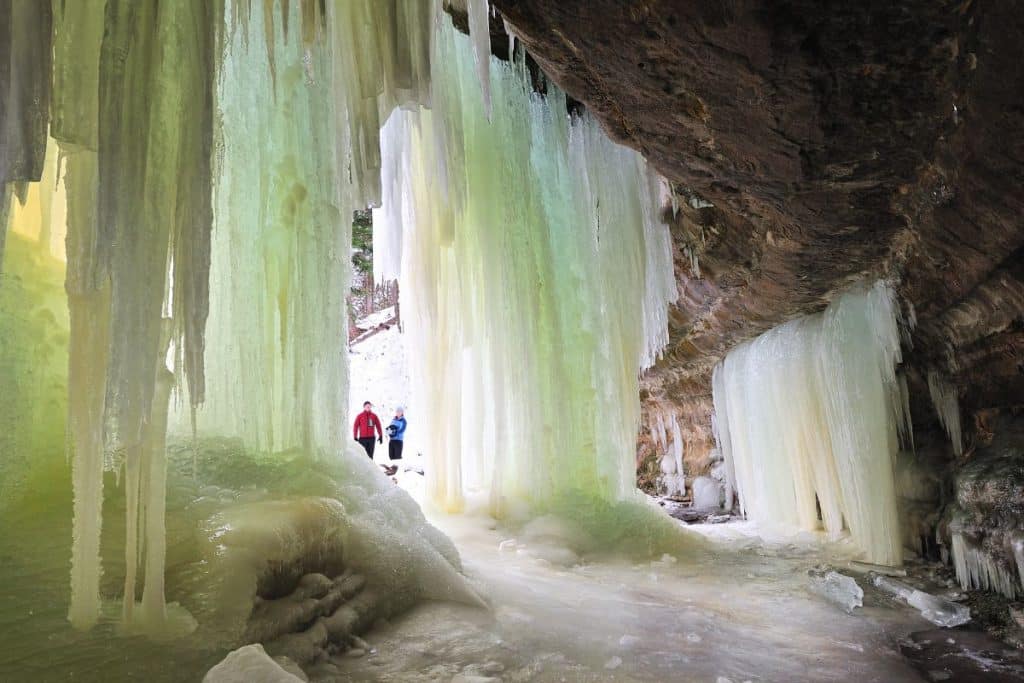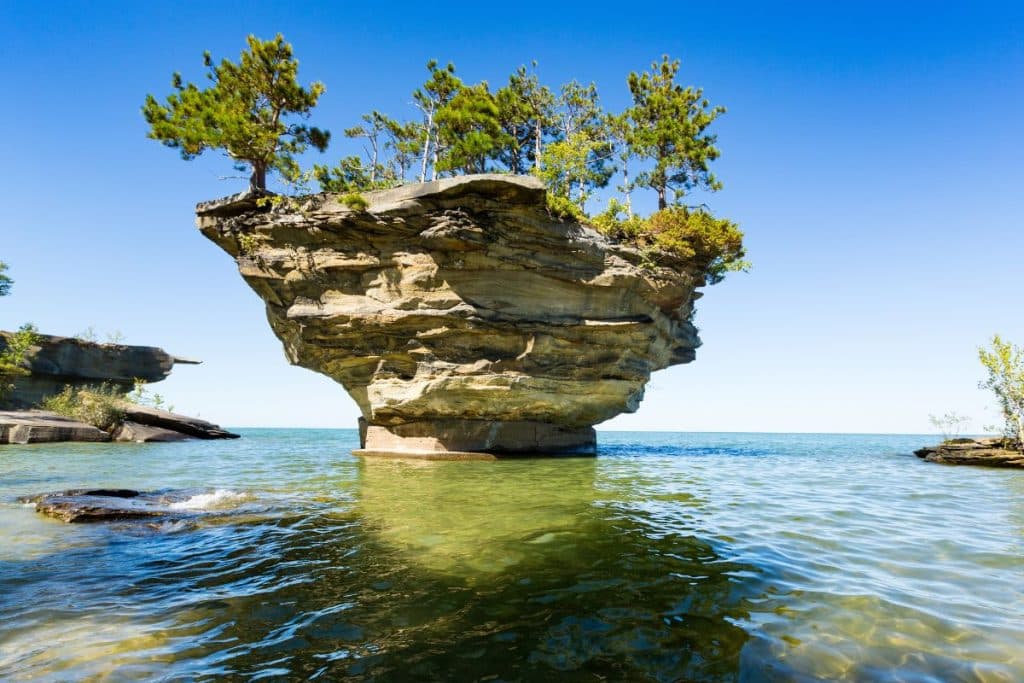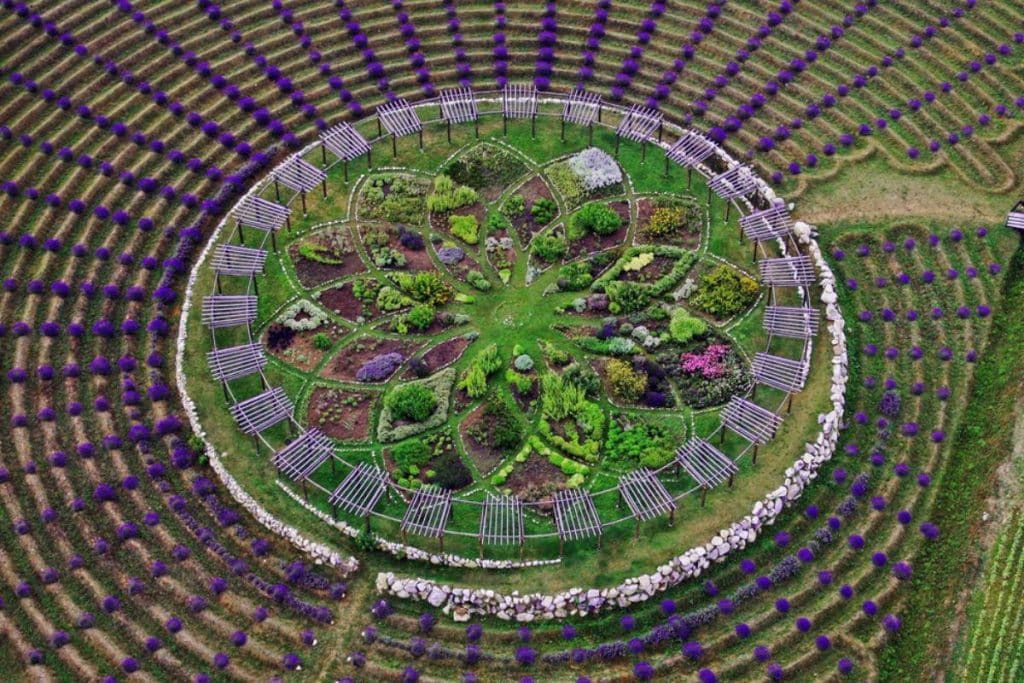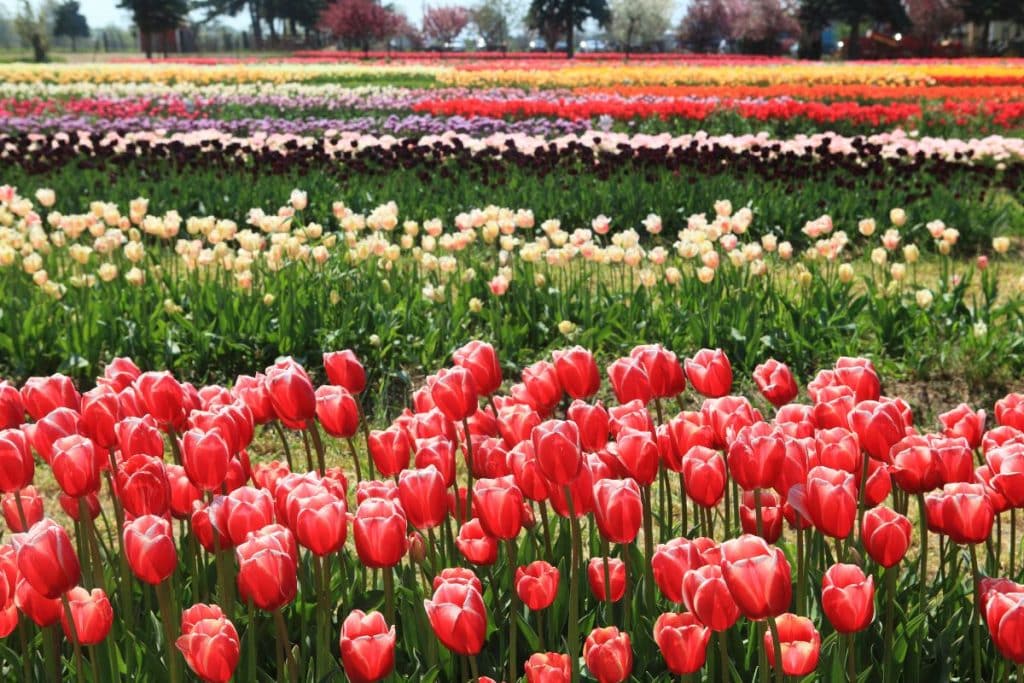Known as the home of the American auto industry and Motown, the state of Michigan is uniquely divided between two peninsulas. The Upper Peninsula is known for its scenic nature, while the mitten-shaped Lower Peninsula is home to the state’s largest cities and most of Michigan’s population.
Both peninsulas are home to a host of hidden treasures if you’re planning a trip to the Great Lakes State. Take some time off the beaten path and enjoy some of Michigan’s lesser-known destinations, from fairytale architecture to tulips.
Kitch-iti-kipi
The scenic Upper Peninsula is home to the Kitch-iti-kipi, or Big Spring, a 45-foot-deep crystal-clear spring with a width of 200 feet. The water remains cold all year round, 45 degrees, while every minute 10,000 liters of water burst through the sandy bottom of the spring.
Enjoy a ride on a self-guided raft, gliding across the serene surface as you peer down into the deep depths of the spring to observe fish in the waters below. Surrounded by walking trails and picnic areas, Kitch-iti-kipi is the perfect summer day out.
Mushroom Houses, Charlevoix

The village of Charlevoix in Michigan’s Lower Peninsula is home to something straight out of a storybook. Considered architectural treasures, the “mushroom houses” feature Charlevoix native Earl Young’s signature design: wide, sweeping eaves and picturesque cedar roofs, along with other design elements reminiscent of fairy tales.
Although a few of the Mushroom Homes are available as vacation rentals, the majority are used as private residences.
Eben Ice Caves, Hiawatha National Forest

Located in Michigan’s scenic Upper Peninsula, the Hiawatha National Forest is known for its dramatic coastlines. But every winter, visitors flock to the forest and the small village of Eben Junction to admire the natural majesty of the area’s ice caves.
The cave’s ice formations create a temporarily magical winter wonderland that draws admirers from miles away. It only takes a short walk through Michigan’s snowy terrain to reach these dazzling icy sculptures.
Turnip Rock at Lake Huron

A 7-mile canoe or kayak trip from the village of Port Austin is enough to enjoy the unusual Turnip Rock, a natural formation isolated in Lake Huron. Carved by wind and water into a natural masterpiece, it took countless years for the rock to be expertly carved into its distinctive shape that resembles an upside-down turnip.
Getting there is part of the fun, with crystal clear waters to cruise through amidst beautiful rugged scenery surrounding the area.
Detroit Heidelberg Project

Head to Michigan’s largest city for the Heidelberg Project, an outdoor art exhibit located primarily in Detroit’s McDougall-Hunt neighborhood. The various displays offer a spectacular array of striking, thought-provoking creations, transforming junk and salvaged objects into thought-provoking, colorful works of art.
Visitors will notice that even the homes in the neighborhood have become part of the community’s outdoor art, with colors and sculptures blending in with the artistic atmosphere of the neighborhood.
Blooming mystical lavender labyrinth

Home to more than a hundred species of wildlife and more than 80 species of plants, Shelby Township is a haven for nature lovers. Located in Michigan’s Lower Peninsula, the area is home to Cherry Point Farm and its incredible Blooming mystical lavender labyrintha place so enormous that you can see it from space.
The ancient spiral design of the labyrinth comes to life in mid-July with an explosion of fragrant purple stems. Lavender is known for its culinary, medicinal and aromatic uses. Visitors are invited to walk the path and enjoy the full essence of the lavender plants.
Veldheer Tulip Gardens, Holland Michigan

Enjoy the vibrant beauty of Dutch tulips without the need for a passport. As the name suggests, the town of Holland, Michigan, is a Dutch settlement in the southwestern part of Michigan’s Lower Peninsula. The area was first settled in 1847 and today offers visitors the opportunity to experience extensive tulip gardens bursting with an abundance of hues.
More than 5 million tulips bloom every spring, creating a kaleidoscope of vibrant splendor in Dutch gardens. Enjoy the gardens and other sights of the Netherlands, including an 18th-century Dutch windmill, a museum and the Dutch Village exhibition complex.




